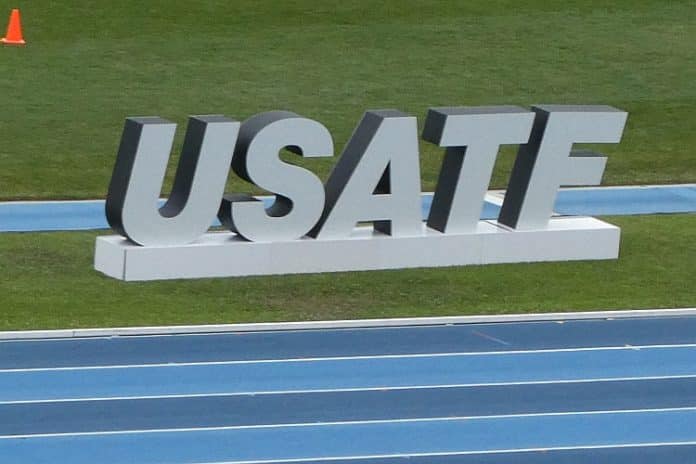
★ The Sports Examiner: Chronicling the key competitive, economic and political forces shaping elite sport and the Olympic Movement.★
★ To get The Sports Examiner by e-mail: sign up here! ★
Happy Holidays!
● Schedule: System upgrades are continuing, so the next post will appear on Thursday (28th). ●
There’s no doubt that USA Track & Field’s $9.58 million contribution to the Oregon 22 organizing committee for the 2022 World Athletics Championships put a strain on its finances.
On Friday, USATF posted its 2022 audited financial statements, dated 30 November 2023, in which the auditors, Indianapolis-based RSN US LLC included a warning in its report:
“[M]anagement is required to evaluate whether there are conditions or events, considered in the aggregate, that raise substantial doubt about USATF’s ability to continue as a going concern within one year after the date that these financial statements are issued or are available to be issued.”
That’s not good.
However, there is no reason to think that USATF is going under anytime soon. Why?
Nike.
The apparel and shoe giant accounted for 58% of USATF revenues in 2022, paying $19.98 million in 2022, of which $725,838 was deducted for commissions, being paid over the length of the contract to former Nike executives Adam Helfant and Chris Bevilaqua, who helped broker the deal. So, USATF is receiving about $19.26 million a year from Nike in an agreement which will continue to 2040.
As for the impact of its $9,584,986 contribution to Oregon 22, a special note on this item included:
“USATF expects its investment in the World Outdoor Championships to generate revenues and other benefits in future years by way of increased broadcast and intellectual property revenue, rights fees, memberships and event registrations.”
However, USATF’s revenues have stalled since the Nike deal was signed in 2014; the reported revenues show a deep reliance now on Nike and grants from the U.S. Olympic & Paralympic Committee (2013 shown for comparison):
● 2013: $19.6 million ~ 63% from 2 sponsors and USOC
● 2014: $35.1 million ~ 80% from 2 sponsors and USOC
● 2015: $32.4 million ~ 73% from 2 sponsors and USOC
● 2016: $37.3 million ~ 65% from 2 sponsors and USOC
● 2017: $35.1 million ~ 68% from 2 sponsors and USOC
● 2018: $34.5 million ~ 72% from 2 sponsors and USOC
● 2019: $34.3 million ~ 71% from 1 sponsor and USOC
● 2020: $37.5 million ~ 74% from 1 sponsor and USOPC
● 2021: $34.6 million ~ 66% from 1 sponsor and USOPC
● 2022: $36.5 million ~ 69% from 1 sponsor and USOPC
In the meantime, expenses over the last five years have shown an increasing trend:
● 2018: $33.7 million
● 2019: $37.2 million (World Champs year)
● 2020: $23.3 million (pandemic)
● 2021: $35.5 million (Olympic year)
● 2022: $45.6 million due to Oregon 22 contribution
(2022 expenses were $36.0 million without the Worlds expense)
USATF’s net assets at the end of 2022 were shown as $548,002, which triggered the “going concern” warning from the auditors. However, there was $12.7 million in cash and investments, down from $26.0 million at the end of 2021, plus a line of credit of $3.1 million still available.
And there is $19.26 million a year from Nike, through 2040.
USATF’s board of directors has made no comment on the organization’s finances, perhaps in part because such thin reserves are not a new problem. At the end of 2019, after a big spending year of $37.2 million, reserves were down to $473,704. But the pandemic saved USATF in 2020, as revenues remained steady thanks to the Nike deal and USOPC grants and expenses went down to just $23.3 million, rebuilding the reserve to $9.3 million.
No such luck in 2023, however, and the audit firm was clearly worried.
The financials are also noted that USATF chief executive Max Siegel had $2.5 million in deferred compensation posted on the federation’s tax return for 2021, essentially related to the Nike deal. In 2022, Siegel obtained an interest-bearing loan from USATF in 2022 of $952,730 to pay the taxes on money he had not received yet, with the loan expected to be repaid as of 15 January 2023. The outstanding balance at the end of 2022 was $405,347.
The statements showed $7.14 million in “Grants and Support Payments,” which appears to be for athlete and/or program payments during 2022, but includes Elite Athletes ($4.0 million), World Championships ($157,500), Sports Performance ($2.4 million), Grass Roots Programs ($341,111) and Member-Based Programs ($251,573).
The 2014 Nike deal was a game-changer for USATF and continues to be its financial lifeline. But the federation has not broken through with other superstar sponsors or events that have raised its revenue level above where it was in the years immediately after the deal was signed.
It will be fascinating to see how USATF weathered its 2023 finances, but we likely won’t know for another year, until the next set of financials is released. The USATF Board has been mum on its financial situation and the U.S. team performed brilliantly at the 2023 World Athletics Championships in Budapest last summer.
Will USATF stay lucky in 2024? If not, its finances may become an issue long before its 2023 reports become public.
Rich Perelman
Editor
You can receive our exclusive TSX Report by e-mail by clicking here. You can also refer a friend by clicking here, and can donate here to keep this site going.
For our updated, 850-event International Sports Calendar (no. 4) for 2023 and beyond, by date and by sport, click here!








